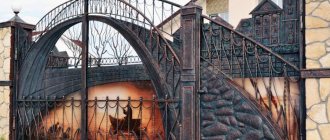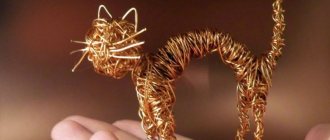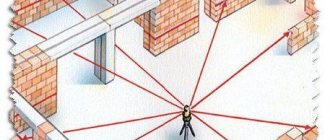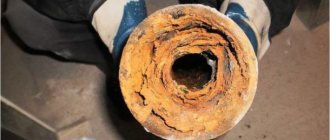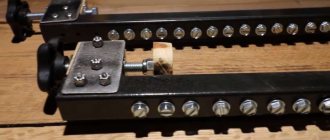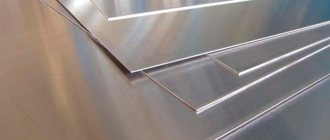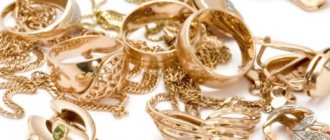Bronze classification
Bronze is classified based on two characteristics: technological and chemical.
Based on technological characteristics, bronze is divided into two types:
- Bronze is deformable. An excellent type of bronze for mechanical processing such as forging, stamping or fluting. This type is distinguished by the low presence of tin in the composition, no more than 6 percent, which makes the source material very plastic.
- Foundry bronze. A special type of bronze for shaped castings. It is used in the production of machine parts for working in salt water, the production of gears and bearing shells.
- Tin bronze. This type is an alloy of bronze with the main component - tin, and phosphorus, lead and zinc can also be used as additional impurities. Tin helps the material acquire elasticity, fusibility and hardness, which is perfectly reflected in the polishing process. Additional components are used to improve casting, mechanical and antifriction properties.
- Special bronze, tin-free. This type of bronze is an alloy without the use of the component tin. Compared to bronze, tin is in no way inferior to it, and in some places even surpasses its performance.
According to chemical characteristics, bronze is divided into:
Properties of bronze
Bronze is characterized by high strength, resistance to corrosion, and excellent anti-friction properties. This type of material has increased resistance to salt water, air, acid solutions and carbon dioxide solutions. Bronze is excellent for soldering and welding with soft and hard solders.
The color of bronze depends on the type of alloying components in the composition, and can vary from white to red. Also, thanks to the latter, the characteristic indicators differ:
Physicochemical features of bronze
Bronze is a material known to mankind for many centuries. This peculiar alloy of tin and red copper was once valued on par with gold and silver. In ancient times, jewelry and various types of weapons and tools were made from this alloy.
The modern alloy is considered a high-tech material alloyed with aluminum, zinc, nickel, silicon and phosphorus, as a result of which the resulting metal has various physical and chemical properties. The main characteristics of the obtained alloys include:
High strength;
Quite good electrical conductivity;
High degree of thermal conductivity.
Methods for determining specific gravity
To determine the degree of compliance of the alloy with the planned work, it is necessary to find out its brand and, depending on the brand, you can determine the specific gravity and other characteristics of bronze, including in order to calculate the weight of any rolled product made from it. All calculations are made using the laws of physics and knowledge of chemistry. To conduct a chemical analysis, bronze is sampled and the composition of the metals is determined.
In general, specific gravity can also be determined experimentally, since it is known that all bodies of the same volume differ in different amounts of mass. In other words, the ratio of the volume and mass of the alloy is a constant value characterizing the substance under study. The basis for the specific gravity of a substance is the gravity of the given alloy, taken as the basis for the volume of the substance.
The ratio of the specific gravity of the alloy and its density corresponds to the ratio of the weight and mass of the body taken as the basis for the study. To determine the specific gravity of bronze, a body made in the required manner is first weighed in the air and then lowered into water. According to Archimedes' law, the body loses weight and therefore the scales attached to it are raised, and a weight of weight is placed on it to determine the weight of the bronze.
The specific gravity value can be determined by the formula
γ=P/V or Specific. Weight = Weight/Volume
In this way, you can determine the specific gravity of a particular bronze bar with your own hands, but of course in practice, chemical analysis of rolled products is used or simply reference data from a table if the brand is already known.
Rolled bronze and examples of calculating its weight
Since, when producing rolled bronze, the alloy undergoes the necessary technological processes associated with the addition of various chemical elements that change the properties of bronze, the process of calculating the specific gravity is carried out again depending on the added alloying elements.
For the convenience of calculating the specific gravity of various bronze alloys, there are special calculators for calculating the specific gravity of substances and systems of tabular values for specific brands, see below. Buyers of metal do not need to carry out calculations on their own, which greatly simplifies the selection of the necessary material for the planned type of production, but the weight of bronze can be calculated manually, knowing the specific gravity of the existing grade.
Example 1: Calculate the weight of a bronze circle with a diameter of 70 mm, brand BrA9Zh4, 4 meters long, in the amount of 18 pieces
First, let's calculate the cross-sectional area of the circle S=πR 2 means S=3.1415·3.5 2 =38.465 cm 2
Let's calculate the mass of one rod knowing that the specific gravity of the BrA9Zh4 brand = 7.6 g/cm 3
M = 7.6 38.465 400 = 116933.6 grams = 116.933 kg
Total
mass of all rolled products M = 116.933 18 = 2104.80
Example 2: Calculate the weight of a bronze sheet 50 mm thick, brand BrKh1, cut 500x1000 mm in the amount of 7 pieces
First, let's calculate the volume of one sheet V = 5 50 100 = 25000 cm 3
Consequently, with the specific gravity of the BrKh1 brand =
8.9 g/cm 3
The weight of one sheet will be M = 8.9 25000 = 222500 grams = 222.5 kg
Total
the entire batch will be M = 222.5 7 = 1557.5 kg
Types of bronze in our metal stamp list:
It is the properties of bronze that determine the popularity of this well-known material, which has not declined for several millennia. As a result of the active development of the metallurgical industry, various grades of this alloy have been developed, each of which has its own characteristics and areas of application.
Density of metals and alloys
Home — Documentation — Density of metals
Using the table of densities of metals and alloys, you can calculate the weight of the required length of the product you have chosen. This is necessary in cases where the entire assortment is calculated in length in the estimate, and sales are carried out by weight. Also, knowing the specific density of metals from the table, you can calculate the weight of the structure by summing the mass of each element included in its composition. The need for such a calculation arises when selecting transport for transporting a given structure. The density of metals in the table allows you to calculate the density of an alloy, the composition of which is known as a percentage. Knowing the mass and material of any part, it is possible to calculate its volume.
| Group name | Name of material, brand | ρ | TO |
| PURE METALS | |||
| Pure metals | Aluminum | 2,7 | 0,34 |
| Beryllium | 1,84 | 0,23 | |
| Vanadium | 6,5-7,1 | 0,83-0,90 | |
| Bismuth | 9,8 | 1,24 | |
| Tungsten | 19,3 | 2,45 | |
| Gallium | 5,91 | 0,75 | |
| Hafnium | 13,09 | 1,66 | |
| Germanium | 5,33 | 0,68 | |
| Gold | 19,32 | 2,45 | |
| Indium | 7,36 | 0,93 | |
| Iridium | 22,4 | 2,84 | |
| Cadmium | 8,64 | 1,10 | |
| Cobalt | 8,9 | 1,13 | |
| Silicon | 2,55 | 0,32 | |
| Lithium | 0,53 | 0,07 | |
| Magnesium | 1,74 | 0,22 | |
| Copper | 8,94 | 1,14 | |
| Molybdenum | 10,3 | 1,31 | |
| Manganese | 7,2-7,4 | 0,91-0,94 | |
| Sodium | 0,97 | 0,12 | |
| Nickel | 8,9 | 1,13 | |
| Tin | 7,3 | 0,93 | |
| Palladium | 12,0 | 1,52 | |
| Platinum | 21,2-21,5 | 2,69-2,73 | |
| Rhenium | 21,0 | 2,67 | |
| Rhodium | 12,48 | 1,58 | |
| Mercury | 13,6 | 1,73 | |
| Rubidium | 1,52 | 0,19 | |
| Ruthenium | 12,45 | 1,58 | |
| Lead | 11,37 | 1,44 | |
| Silver | 10,5 | 1,33 | |
| Waist | 11,85 | 1,50 | |
| Tantalum | 16,6 | 2,11 | |
| Tellurium | 6,25 | 0,79 | |
| Titanium | 4,5 | 0,57 | |
| Chromium | 7,14 | 0,91 | |
| Zinc | 7,13 | 0,91 | |
| Zirconium | 6,53 | 0,82 | |
| ALLOYS FROM NON-FERROUS METALS | |||
| Aluminum casting alloys | AL1 | 2,75 | 0,35 |
| AL2 | 2,65 | 0,34 | |
| AL3 | 2,70 | 0,34 | |
| AL4 | 2,65 | 0,34 | |
| AL5 | 2,68 | 0,34 | |
| AL7 | 2,80 | 0,36 | |
| AL8 | 2,55 | 0,32 | |
| AL9 (AK7ch) | 2,66 | 0,34 | |
| AL11 (AK7TS9) | 2,94 | 0,37 | |
| AL13 (AMg5K) | 2,60 | 0,33 | |
| AL19 (AM5) | 2,78 | 0,35 | |
| AL21 | 2,83 | 0,36 | |
| AL22 (AMg11) | 2,50 | 0,32 | |
| AL24 (AC4Mg) | 2,74 | 0,35 | |
| AL25 | 2,72 | 0,35 | |
| Tin and lead babbits | B88 | 7,35 | 0,93 |
| B83 | 7,38 | 0,94 | |
| B83S | 7,40 | 0,94 | |
| BN | 9,50 | 1,21 | |
| B16 | 9,29 | 1,18 | |
| BS6 | 10,05 | 1,29 | |
| Tin-free bronzes, foundry | BrAmts9-2L | 7,6 | 0,97 |
| BrAZH9-4L | 7,6 | 0,97 | |
| BrAMZH10-4-4L | 7,6 | 0,97 | |
| BrS30 | 9,4 | 1,19 | |
| Tin-free bronzes, pressure-processed | BrA5 | 8,2 | 1,04 |
| BrA7 | 7,8 | 0,99 | |
| BrAmts9-2 | 7,6 | 0,97 | |
| BrAZH9-4 | 7,6 | 0,97 | |
| BrAZhMts10-3-1.5 | 7,5 | 0,95 | |
| BrAZHN10-4-4 | 7,5 | 0,95 | |
| BrB2 | 8,2 | 1,04 | |
| BrBNT1.7 | 8,2 | 1,04 | |
| BrBNT1.9 | 8,2 | 1,04 | |
| BrKMts3-1 | 8,4 | 1,07 | |
| BrKN1-3 | 8,6 | 1,09 | |
| BrMts5 | 8,6 | 1,09 | |
| Bronze tin deformable | BrOF8-0.3 | 8,6 | 1,09 |
| BrOF7-0.2 | 8,6 | 1,09 | |
| BrOF6.5-0.4 | 8,7 | 1,11 | |
| BrOF6.5-0.15 | 8,8 | 1,12 | |
| BrOF4-0.25 | 8,9 | 1,13 | |
| BrOTs4-3 | 8,8 | 1,12 | |
| BrOTsS4-4-2.5 | 8,9 | 1,13 | |
| BrOTsS4-4-4 | 9,1 | 1,16 | |
| Bronze tin castings | BrO3TS7S5N1 | 8,84 | 1,12 |
| BrO3Ts12S5 | 8,69 | 1,10 | |
| BrO5TS5S5 | 8,84 | 1,12 | |
| BrO4Ts4S17 | 9,0 | 1,14 | |
| BrO4TS7S5 | 8,70 | 1,10 | |
| Beryllium bronzes | BrB2 | 8,2 | 1,04 |
| BrBNT1.9 | 8,2 | 1,04 | |
| BrBNT1.7 | 8,2 | 1,04 | |
| Copper-zinc alloys (brass) foundry | LTs16K4 | 8,3 | 1,05 |
| LTs14K3S3 | 8,6 | 1,09 | |
| LTs23A6Zh3Mts2 | 8,5 | 1,08 | |
| LC30A3 | 8,5 | 1,08 | |
| LTs38Mts2S2 | 8,5 | 1,08 | |
| LTs40S | 8,5 | 1,08 | |
| LS40d | 8,5 | 1,08 | |
| LTs37Mts2S2K | 8,5 | 1,08 | |
| LTs40Mts3ZH | 8,5 | 1,08 | |
| Copper-zinc alloys (brass), pressure-processed | L96 | 8,85 | 1,12 |
| L90 | 8,78 | 1,12 | |
| L85 | 8,75 | 1,11 | |
| L80 | 8,66 | 1,10 | |
| L70 | 8,61 | 1,09 | |
| L68 | 8,60 | 1,09 | |
| L63 | 8,44 | 1,07 | |
| L60 | 8,40 | 1,07 | |
| LA77-2 | 8,60 | 1,09 | |
| LAZ60-1-1 | 8,20 | 1,04 | |
| LAN59-3-2 | 8,40 | 1,07 | |
| LZhMts59-1-1 | 8,50 | 1,08 | |
| LN65-5 | 8,60 | 1,09 | |
| LMts58-2 | 8,40 | 1,07 | |
| LMtsA57-3-1 | 8,10 | 1,03 | |
| Pressed and drawn brass rods | L60, L63 | 8,40 | 1,07 |
| LS59-1 | 8,45 | 1,07 | |
| LZhS58-1-1 | 8,45 | 1,07 | |
| LS63-3, LMts58-2 | 8,50 | 1,08 | |
| LZhMts59-1-1 | 8,50 | 1,08 | |
| LAZ60-1-1 | 8,20 | 1,04 | |
| Magnesium alloys foundry | Ml3 | 1,78 | 0,23 |
| ML4 | 1,83 | 0,23 | |
| Ml5 | 1,81 | 0,23 | |
| Ml6 | 1,76 | 0,22 | |
| Ml10 | 1,78 | 0,23 | |
| Ml11 | 1,80 | 0,23 | |
| Ml12 | 1,81 | 0,23 | |
| Magnesium alloys wrought | MA1 | 1,76 | 0,22 |
| MA2 | 1,78 | 0,23 | |
| MA2-1 | 1,79 | 0,23 | |
| MA5 | 1,82 | 0,23 | |
| MA8 | 1,78 | 0,23 | |
| MA14 | 1,80 | 0,23 | |
| Pressure-processed copper-nickel alloys | Kopel MNMts43-0.5 | 8,9 | 1,13 |
| Constantan MNMts40-1.5 | 8,9 | 1,13 | |
| Cupronickel MnZhMts30-1-1 | 8,9 | 1,13 | |
| Alloy MNZh5-1 | 8,7 | 1,11 | |
| Cupronickel MH19 | 8,9 | 1,13 | |
| Alloy TB MN16 | 9,02 | 1,15 | |
| Nickel silver MNTs15-20 | 8,7 | 1,11 | |
| Kunial A MNA13-3 | 8,5 | 1,08 | |
| Kunial B MNA6-1.5 | 8,7 | 1,11 | |
| Manganin MNMts3-12 | 8,4 | 1,07 | |
| Nickel alloys | NK 0.2 | 8,9 | 1,13 |
| NMTs2.5 | 8,9 | 1,13 | |
| NMTs5 | 8,8 | 1,12 | |
| Alumel NMtsAK2-2-1 | 8,5 | 1,08 | |
| Chromel T HX9.5 | 8,7 | 1,11 | |
| Monel NMZHMts28-2.5-1.5 | 8,8 | 1,12 | |
| Anti-friction zinc alloys | TsAM 9-1.5L | 6,2 | 0,79 |
| TsAM 9-1.5 | 6,2 | 0,79 | |
| TsAM 10-5L | 6,3 | 0,80 | |
| TsAM 10-5 | 6,3 | 0,80 | |
| STEEL, SHAVINGS, CAST IRON | |||
| Stainless steel | 04Х18Н10 | 7,90 | 1,00 |
| 08Х13 | 7,70 | 0,98 | |
| 08Х17Т | 7,70 | 0,98 | |
| 08Х20Н14С2 | 7,70 | 0,98 | |
| 08Х18Н10 | 7,90 | 1,00 | |
| 08Х18Н10Т | 7,90 | 1,00 | |
| 08Х18Н12Т | 7,95 | 1,01 | |
| 08Х17Н15М3Т | 8,10 | 1,03 | |
| 08Х22Н6Т | 7,60 | 0,97 | |
| 08Х18Н12Б | 7,90 | 1,00 | |
| 10Х17Н13М2Т | 8,00 | 1,02 | |
| 10Х23Н18 | 7,95 | 1,01 | |
| 12Х13 | 7,70 | 0,98 | |
| 12Х17 | 7,70 | 0,98 | |
| 12Х18Н10Т | 7,90 | 1,01 | |
| 12Х18Н12Т | 7,90 | 1,00 | |
| 12Х18Н9 | 7,90 | 1,00 | |
| 15Х25Т | 7,60 | 0,97 | |
| Structural steel | Structural steel | 7,85 | 1,0 |
| Steel casting | Steel casting | 7,80 | 0,99 |
| High-speed steel with tungsten content, % | 5 | 8,10 | 1,03 |
| 10 | 8,35 | 1,06 | |
| 15 | 8,60 | 1,09 | |
| 18 | 8,90 | 1,13 | |
| Chips (t/m3) | aluminum fine crushed | 0,70 | |
| steel (small loach) | 0,55 | ||
| steel (large loach) | 0,25 | ||
| cast iron | 2,00 | ||
| Cast iron | grey | 7,0-7,2 | 0,89-0,91 |
| malleable and high strength | 7,2-7,4 | 0,91-0,94 | |
| antifriction | 7,4-7,6 | 0,94-0,97 | |
Types of Bronze Alloys
How popular bronze was and remains is evidenced by the fact that an entire period in human history was called the Bronze Age. Scientists believe that the word “bronze” itself owes its origin to the old name of the Italian city of Brindisi, famous for its foundries.
Initially, bronze was obtained through the process of melting and mixing metals such as. Bells were often cast from it, which is why it received the name “bell”. It was also used to make weapons and tools, various household utensils, sculptural compositions and interior items.
In many old photos you can see interiors that still amaze with their beauty. With the development of the metallurgical industry, other types of bronze appeared, into which aluminum, iron, beryllium, silicon, zinc, lead, phosphorus, etc. began to be introduced instead of tin.
Changing the traditional chemical composition of bronze made it possible not only to improve its mechanical properties (hardness, strength, wear resistance and resistance to aggressive environments), but also to change its color. Thus, the surface color of bronze products can vary from red (if the bronze contains a large amount of copper) to gray and even black. The change in color of this alloy when its chemical composition is varied is a very important property in the manufacture of decorative products.
Many people confuse it, although this is a completely different copper alloy with different properties, the chemical composition of which, in addition to the base metal, contains zinc. Although the color of brass can be confused with some brands of bronze, in many of their characteristics they are different materials, and therefore their areas of application differ.
Another common copper alloy, the main alloying element of which is nickel, is cupronickel. The surface of products made from it has a beautiful silver color. Cupronickel is actively used for minting coins and making cutlery.
Depending on whether the bronze contains tin or not, it can be of the tin or tin-free type.
If we talk about bronzes of the first type, then the maximum amount of tin in their chemical composition can reach up to 33%. Increasing the tin content slightly reduces the specific gravity and density of the base metal, but increases such properties of the final material as hardness and strength. In addition, with an increase in tin in the composition of bronze, the color of the products made from it becomes lighter, which is noticeable even from their photos. In addition to tin, which also reduces the melting point of the finished alloy, the chemical composition of such a metal may also contain other chemical elements - arsenic, lead, zinc, etc.
If we talk about tin-free bronzes, the specific gravity and density of which differ slightly from the similar characteristics of alloys of the first type, then in many of their mechanical properties they can surpass not only tin bronzes, but also some grades of steel. Naturally, the colors of products made from such alloys can vary significantly.
Thermal conductivity and other characteristics of bronze
As mentioned above, the percentage of the main alloying element in the chemical composition of bronze changes not only its color, but also its mechanical properties. At the same time, the density and specific gravity, when compared with similar characteristics of materials of other brands, change slightly. This pattern is relevant not only for bronze, but also for brass, as well as for other copper alloys.
If we talk about tin-type bronzes, then their property, such as ductility, begins to decrease if the percentage of tin in them exceeds 5%. If the tin content is increased to 20%, then simultaneously with a decrease in hardness, the fragility of such a material will also increase. That is why, to perform foundry operations and metal processing by plastic deformation, you can only use bronze that contains no more than 6% tin.
The chemical composition of certain grades of bronze includes zinc, the content of which can reach up to 10%. Such alloying practically does not change the specific gravity and density of the metal, and also does not have a significant effect on its mechanical properties, but reduces its cost.
To improve such a property of bronze as machinability (in particular, to facilitate the process of breaking chips), a small amount of lead (up to 5%) is introduced into it. Phosphorus, present in some brands of bronze, which are called phosphorous, acts in them as a deoxidizing agent.
An important property of bronze, which contains tin, is the minimum shrinkage coefficient. In most other characteristics, tin-free bronzes are superior to tin bronzes. Thus, alloys in which aluminum is the main alloying element have improved mechanical properties and are also more resistant to even very aggressive environments. Alloys in which copper is mixed with silicon and zinc are characterized by high fluidity in the molten state, which predetermined the scope of their application - the manufacture of various objects by casting. Bronzes containing beryllium are durable and hard materials, products from which are also highly elastic.
When copper is mixed with alloying additives, which occurs when creating bronze, the property of the base metal, such as thermal conductivity, is reduced. In particular, those chemical elements that are used in the manufacture of bronze make its thermal conductivity even lower than that of another copper alloy - brass. The only exceptions are those grades of bronze in which the copper content is very significant.
This property of most grades of bronze, such as low thermal conductivity, somewhat limits the scope of their application. Due to the fact that they do not remove heat very well, products made from them are not used in heavily loaded friction units; welding electrodes are not made from such bronzes, as well as elements of mechanisms that must ensure rapid heat removal.
Structure and composition of bronze alloy
In general, bronze is an alloy of copper. The second component can be various metals with the exception of zinc - this alloy is called brass, and nickel - it is called cupronickel. In accordance with the nature of the second ingredient, bronzes are divided into tin, that is, containing tin, and tin-free - all others, where the second component is another metal. The composition of fine impurities is not taken into account.
Read below about the composition of black, white, blue, green, tin, aluminum and other bronzes, the proportions of copper and tin in them, as well as how bronze differs from brass in composition.
The composition and structure of bronze metal are discussed in the video below:
Tin metals
Consist of tin and copper. Studies show that copper can dissolve up to 15.8% of tin, which automatically indicates the possibility of the appearance of different phases of solid solutions. So it is: until the tin fraction reaches 6–8%, the α-phase is stable, providing good malleability and ductility of the alloy. With an increase in the proportion of tin, qualities such as brittleness and hardness appear, which does not prevent the use of bronze with a tin content of up to 65%, since then the alloy also has other interesting qualities.
The properties and even the color of the alloy depend on tin. So, with a copper proportion of 90–99%, the color of bronze is closer to red. The color of an alloy containing 85% copper is yellow, containing more than 50% is white, and with a copper proportion of 35% the alloy becomes gray-steel.
The properties change accordingly.
- With a low tin content - up to 2%, bronze can be forged in the cold, and not only at normal temperature.
- With a tin content of more than 5%, the alloy can only be forged at red-hot temperatures, which is why bronze is considered not a very suitable alloy for forging.
- If the solid solution includes more than 15% tin, the alloy loses such quality as malleability, acquiring high hardness in return.
- With a very high tin content, the alloy becomes soft again.
Varieties
Due to the sharp difference in properties, tin bronzes are divided into 2 groups:
- deformable – low tin content. Such alloys can be forged and rolled, as well as cut and sharpened. They are characterized by elasticity and high fatigue resistance, therefore they are often used in the manufacture of springs;
- foundry - with a higher tin content. Products from it are produced by casting. Despite its not very high fluidity, bronze is used to produce castings of the most complex configurations, since it gives very little shrinkage - less than 1%, while for cast iron the shrinkage is 1.5%, and for steel - 2%.
Excellent bronze products - figurines, dishes, decorations on railings, and so on, are produced using the casting method.
Impurities
Bronze may contain a variety of random impurities in very small quantities. At the same time, special additives are introduced into the composition in order to obtain additional properties.
- Zinc – can make up up to 10–15% by weight. It dissolves in an α-solution and improves mechanical properties: increases fluidity, density of the casting, etc. At the same time, metal significantly reduces the cost of the product, since it is much cheaper than tin. This bronze is called Admiralty bronze and is more resistant to sea water.
- Lead is added to give the alloy anti-friction properties and the ability to process products by cutting.
- Phosphorus increases fluidity and wear resistance.
Bronze is marked with the letters Br. Further in the name alloying additives are indicated, and their percentage is indicated through a hyphen. The share of copper is not indicated, but calculated.
Accordingly, Br.O-10 means a copper alloy, where the alloying additive is tin, the share of which is 10%.
Tin-free metals
They are an alloy of copper with other metals, with the exception of zinc and nickel. Such bronzes are named according to the alloying element, the proportion of which is the largest in the alloy - aluminum bronze, for example, beryllium and so on. It is marked in exactly the same way. Thus, Br.AMts-7-1 means that the alloy contains 7% aluminum, 1% manganese and, accordingly, 92% copper.
Other metals alloyed with copper create different properties. Although, to be fair, most of them are designed in an attempt to make bronze cheaper by eliminating the expensive tin.
- Aluminum bronzes are distinguished by higher anti-corrosion and mechanical properties, and the alloy with aluminum is cheaper. However, despite the fact that aluminum bronze is more fluid, it shrinks more, so it is rarely used to produce complex castings. Aluminum and copper form a solid solution, the composition of which depends both on the proportion of aluminum and on the production conditions, in particular, on the cooling rate. As a result, its qualities such as ductility or strength change noticeably. Single-phase aluminum bronzes are distinguished by an excellent combination of strength and ductility (maximum load is 400–450 MPa, and ductility is 60%). Two-phase ones are more durable and hard, but require different processing depending on their structure. In addition, they give much greater shrinkage.
- Silicon bronzes can contain up to 3% silicon and are characterized by anti-friction properties and elasticity. The structure is single-phase, which ensures good ductility and relative ease of processing. Rarely used for castings. If the silicon fraction exceeds 3%, a brittle γ phase appears, so the composition of the alloy rarely changes.
- Beryllium bronzes are characterized by high corrosion resistance, wear resistance, increased fatigue resistance, and a very high elastic limit. The alloy is a heat-resistant material - it “works” up to a temperature of 340 C, and has good thermal and electrical conductivity. Beryllium bronzes can be hardened and aged, which has a very positive effect on their mechanical properties.
- Manganese bronze contains manganese, and usually also includes zinc and sometimes tin. The properties of alloys differ markedly and are used for different purposes.
- Arsenic bronze is quite well known , but only as a historical material. It was superior in quality to tin, and formed a large number of varieties for different purposes. However, the depletion of surface arsenic deposits, the toxicity of production and the impossibility of smelting eventually led to its disappearance.
The characteristics and special properties of lead, beryllium, aluminum and other bronzes are discussed below.
Do you want to cast soldiers at home? Then watch the following video and stock up on bronze:
Areas of application and labeling rules
The variety of spheres is explained by its unique properties. The modern range of its brands allows you to optimally select them for solving certain technological problems.
Bronze alloys of various grades are used to produce elements of gear, screw and worm joints, parts subjected to significant friction during operation, electrical and plumbing products, various membranes, springs, and connecting elements. In addition, bronze is used to make body parts for various equipment; it is used in the shipbuilding and automotive industries and even in the aerospace industry. Interior compositions and sculptures have long been made from bronze; now it is also used in the production of furniture fittings, sanitary ware and various decorative items.
Only very experienced specialists are able to determine, even from a photo of a bronze product, what grade of alloy it is made from. And markings consisting of alphanumeric designations help non-professionals solve such a problem. It always contains the letters “Br”, which indicates that this is bronze. In addition, there are other letters in the marking, each of which indicates a chemical element that is part of the bronze alloy. At the same time, the percentage of copper is not indicated in the marking; it can be determined by subtracting the total amount of other elements from 100% (the entire volume of bronze).
Marking a bronze alloy, in addition to the details of its chemical composition, allows us to determine the main properties that it possesses. Such properties include, in particular, the density of the material, as well as its specific gravity. This information is of purely practical importance. Knowing the specific gravity of a certain bronze alloy, you can easily calculate the exact weight of the object that is made from it.
All such information, as well as the exact chemical composition of bronze of various grades, is contained in special tables.
Where and how it is used
Bronze alloys are in demand; their range of applications ranges from critical components of equipment and infrastructure to the sphere of beauty and design.
Industry, housing and communal services
Each sphere requires alloys with different properties:
- Casting varieties, especially aluminum with its dense structure, are equipment material for working under water or in an aggressive environment (for example, acid).
- Deformable types are ordered by manufacturers of high-precision instruments.
- Electrical products are made from thermally and electrically conductive beryllium bronze. As the hardest and most plastic, it is used for membranes, springs, and tools.
- It, being immune to the amplitudes of dynamic loads, becomes the filling of on-board computers of aircraft and automobile industry products.
- For bearings operating under increased loads, lead alloy is chosen. Its advantages: ultra-low abrasion, impact resistance, strength, refractoriness.
- Products of complex shapes are made from zinc or silicon compounds. Their melts are particularly fluid; the cooled product is difficult to compress and does not spark during mechanical manipulation.
Despite the high cost, important household parts are made from bronze: fittings, taps, mixers.
Bronze is indispensable in water supply as an “inhibitor” of corrosion, bacteria, and other dangerous microflora.

